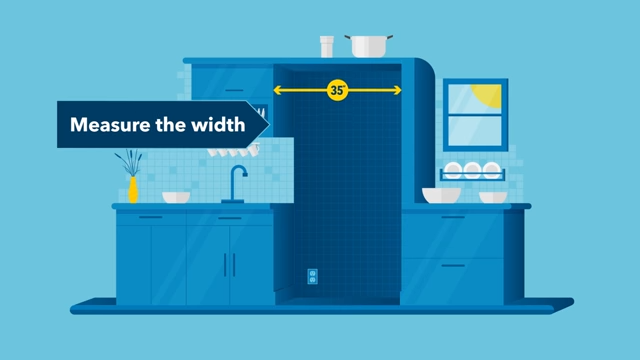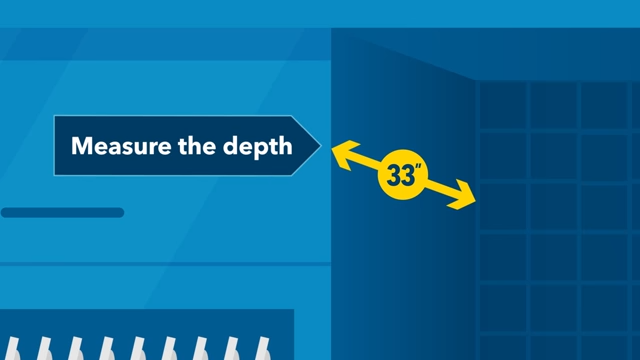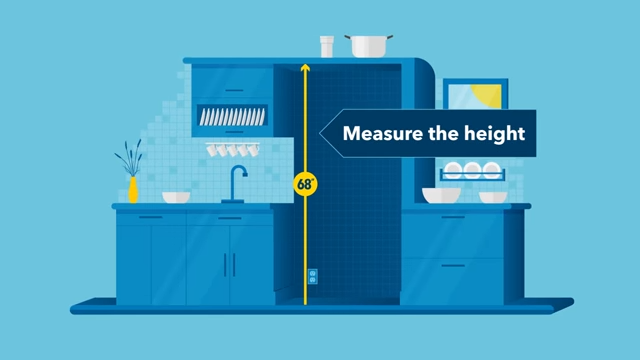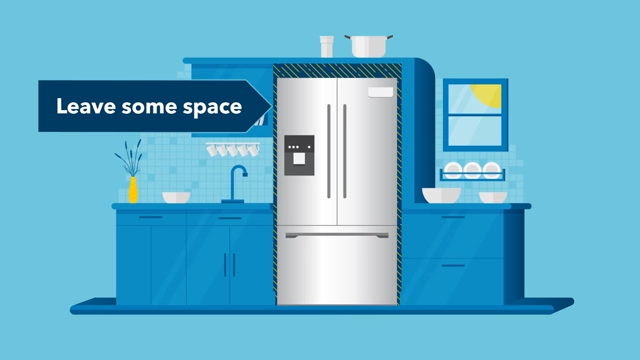We all know that the refrigerator is one of the most important appliances in your kitchen for storing all of your food and drinks. Over time, it can become more difficult to find space for new items and it might be time to invest in a larger model. Or your fridge has broken. Or you move to the new appartment and need a new refrigerator. This article will show you how to measure a new refrigerator so that it won’t be difficult to find a suitable place for it in your kitchen!
Standard Refrigerators Types
The four main types of refrigerators are:
- bottom-freezer,
- top-freezer,
- French door,
- side-by-side models.

Bottom and top-freezers have a smaller footprint in general which makes them better for small kitchens. French Door Refrigerators have two sets of doors which allows for more interior storage but at the same time they need more space. French door models together with side-by-sides tend to be larger than their top or bottom-mounted counterparts. That’s why they may not fit in all kitchens even if there seems to be enough space for it. When we talk about countertop, we mean the horizontal surface that covers your kitchen. So, it’s important to measure your countertop and height before purchasing a refrigerator, you can save yourself a lot of trouble!
Average standard refrigerator dimensions range from around 24 to 40 inches in width, 62 to 72 inches in height and 29 to 36 inches in depth.
Taking Precise Measurements
The first thing you have to do is take measurements of your kitchen countertop and height – width isn’t important here because most fridges can be upsized or downsized with ease so their dimensions will vary depending on the type of fridge you get. After measuring everything carefully, there’s only one more step left: taking precise measurements!
To measure your refrigerator you may use:
- a tape measure,
- a laser distance meter.
Firstly, measure refrigerator width by placing your tape measure horizontally, but make sure that you are measuring from inside edge to inside edge.

Secondly, measure the depth of your refrigerator by placing your tape measure vertically, but make sure that you are measuring from front to back.

Thirdly, measure the height of your refrigerator by placing your tape measure vertically, but make sure that you are measuring from floor to top. .
.
Usefull Tips
- Don’t forget to leave space for cabinets both on sides and behind the fridge! You can get a rough estimate if you subtract about an inch or two from each side. That way, there won’t be any surprises when it comes time to install/ place your new appliance in its designated spot.
- Do not include handles in this measurement as they do not affect how much room is needed underneath the unit. They also don’t affect how well or poorly it will fit into a base cabinet so keep them out of this process altogether.
- The type of freezer compartment might add extra height to your fridge measured height.
- Also keep in mind refrigerator door.

- Clearance of the refrigerator door is important to consider how much space you have between your cabinets and the refrigerator door. This clearance is needed so that the doors can swing open freely without hitting a cabinet or countertop, but it also depends on what type of hinges you need for installation as well as whether the refrigerator has water/ ice dispenser systems.
- The refrigerator door might get in the way of the main walkway. In that case you will need to measure how much room is available your fridge not “block” the route.

Good Luck Measuring!
If you are looking for a new fridge, this article will help you understand how to measure it so that the appliance fits in your space. When shopping for a refrigerator, take note of its width and depth dimensions before purchasing! Remember not to forget about the height too when thinking about where it will be placed. This information can save you time and money by making sure your new purchase doesn’t end up taking up more than just the kitchen countertop area. We hope all the tips will help you to make measuring a fridge less intimidating and tricky!
